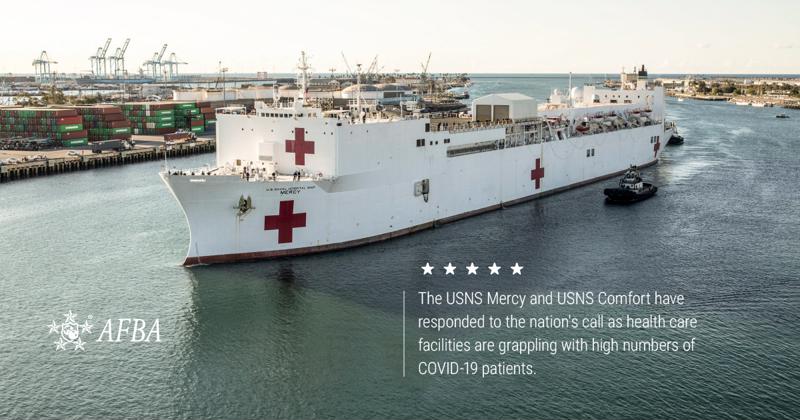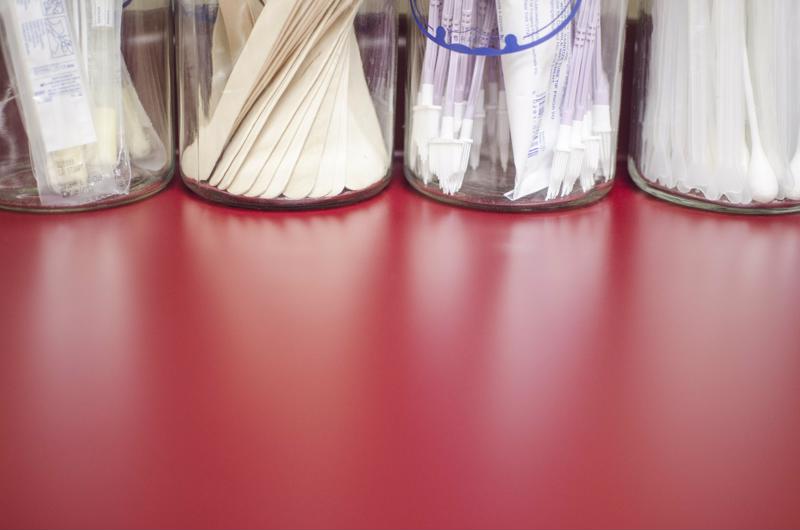The U.S. Navy's hospital ships Comfort and Mercy — and the servicemembers and health care providers onboard — are actively responding to the COVID-19 national emergency. These vessels are uniquely equipped floating facilities that have had a steady presence and role in crisis response throughout the nation's history.
A history of 'hospitals at sea'
In 1803, during the Barbary Wars, the wooden bomb vessel USS Intrepid was reconfigured as a hospital ship, setting the standard for converting war vessels of all types into medical facilities. Sister ships USNS Mercy (T-AH-19) and USNS Comfort (T-AH-20) both began life as oil supertankers in the 1970s before undergoing conversions in the late 1980s. The USS Relief is the only purpose-built hospital ship in the history of the armed forces.
Hospital ships have provided their services during times of war and peace when foreign enemies, national disasters and pandemics have threatened the nation. The USS Relief provided assistance following the 1933 Long Beach earthquake, and the USNS Comfort aided survivors of Hurricane Katrina in 2005 after providing shelter and relief services to displaced citizens and first responders following the 9/11 attacks.
Vessels including the USS Red Rover during the Civil War and the USS Solace at the Battle of Iwo Jima have offered ambulatory services, transporting and treating wounded servicemembers en route to a safer harbor. During the First World War and the 1918 influenza pandemic, the USS Solace along with two other vessels, also named Comfort (AH-3) and Mercy (AH-4), took in overflow patients in New York and sailed the sick and wounded back home from across the Atlantic.

Onboard the USNS Mercy and USNS Comfort
These floating hospitals have responded to the nation's call as health care facilities in major markets have exceeded capacities and grappled with a high influx of COVID-19 patients in addition to others needing medical attention. In March 2020, the hospital ships Mercy and Comfort were deployed to serve the West Coast and New York City, respectively, with the purpose of accepting and treating non-COVID-19 patients.
According to the U.S. Department of Defense, both the Mercy and Comfort hospital ships are nearly 900 feet long and travel at 12 knots. Each can accommodate up to 1,200 health care workers, 71 civil service mariners and up to 5,000 units of blood. There are 1,000 patient beds, 80 intensive care beds and 12 operating rooms, along with medical imaging suites, aboard each. Their white exteriors are emblazoned with nine red crosses, declaring their purpose and signaling that an attack would be considered a war crime.
Re-equipping for the fight against COVID-19
According to the U.S. Naval Institute, fleet systems engineers from the Naval Information Warfare Systems Command (NAVWAR) were called upon to quickly revamp the onboard systems for both vessels while they were en route to their destinations. This included new, fast and secure solutions that rely on fiber optic cables. These systems are critical for managing communications, patient health records and supply inventories onboard and in collaboration with partnering medical centers on land.
"We have been at the center of incorporating advanced technologies that enable new operational concepts for decades and today is no different," said NAVWAR Commander Rear Adm. Christian Becker in a Navy statement. "We have and will continue to innovate, lead and drive ways to speed delivery of advanced capabilities when and where needed to win this fight."


